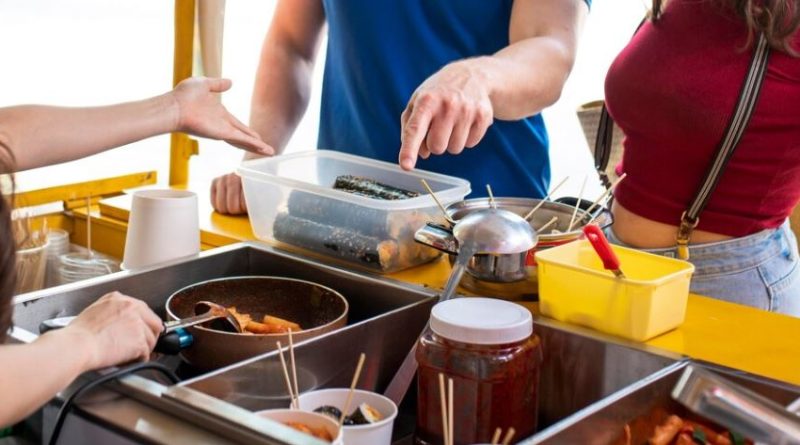From Market to Table: A Culinary Journey to Explore Local Culture Through Traditional Markets
For the true gastronome, a city’s soul isn’t found in its Michelin-starred restaurants, but in the vibrant chaos and rich aromas of its traditional markets. These bustling hubs are more than just places to buy food; they are living museums of local culture, offering an unfiltered glimpse into daily life, culinary traditions, and the very heart of a community. Stepping into a traditional market is an invitation to engage your senses, interact with locals, and uncover the stories behind every stall.
The Spice Souks of Marrakech, Morocco: A Sensory Overload
The markets of Marrakech are legendary, and nowhere is their magic more potent than in the spice souks. Forget the sterile aisles of a supermarket; here, the air is thick with exotic scents, and the visual tapestry of vibrant colors is intoxicating.
- The Experience: Wander through labyrinthine alleys, where pyramids of saffron, turmeric, cumin, and ras el hanout tower over stalls. Beyond spices, you’ll find aromatic herbs, potent argan oil, dried fruits, and a bewildering array of remedies. Engage with the friendly vendors – they are often eager to share the origins of their wares, their traditional uses, and even a recipe or two. Taste a fresh date, marvel at the intricate patterns of a tagine pot, and let the sensory overload transport you. It’s a place where bartering is an art form, and every transaction is a social exchange. The stories of centuries of trade and culinary heritage are palpable in every corner.
Floating Markets of Thailand: A Culinary Dance on Water
Thailand’s floating markets offer a truly unique market experience, blending commerce with a picturesque watery landscape. While some have become tourist-heavy, places like Amphawa Floating Market (less commercialized than Damnoen Saduak) or even some smaller, local morning markets retain their authentic charm.
- The Experience: Glide along narrow canals in a longtail boat, navigating a bustling waterway where vendors sell their wares directly from traditional wooden boats. The air is filled with the sizzle of woks, the aroma of grilled seafood, and the sweet scent of tropical fruits. You can purchase freshly prepared noodles, succulent grilled prawns, sticky rice with mango, or vibrant curries directly from a boat kitchen. The interaction is delightful – you simply hail a vendor, they pull up alongside, and your order is cooked on the spot. It’s a rhythmic dance of boats, food, and friendly smiles that exemplifies Thai ingenuity and hospitality.
Farmer’s Markets in Tuscany, Italy: The Essence of “Cucina Povera”
Italy’s culinary philosophy, often rooted in “cucina povera” (peasant cooking), emphasizes fresh, seasonal, and local ingredients. Nowhere is this more evident than in the charming farmer’s markets scattered across regions like Tuscany.
- The Experience: Visit a market in a small Tuscan town – perhaps Mercato Sant’Ambrogio in Florence (before it becomes too touristy) or a Sunday market in a town like Pienza. Here, local farmers proudly display their bounty: sun-ripened tomatoes, aromatic basil, artisanal cheeses (pecorino!), cured meats, and freshly baked breads. The atmosphere is lively, filled with the chatter of vendors and shoppers, exchanging greetings and recipes. Engage with the producers; they’ll happily tell you about their family farm, the specific terroir that gives their olive oil its unique flavor, or the best way to prepare their seasonal vegetables. It’s an immersive lesson in Italian food culture, where quality and simplicity reign supreme, and every ingredient tells a story of the land.
Mercado de San Juan, Mexico City, Mexico: Exotic Delights and Culinary Education
Mexico City’s markets are a sensory explosion, and the Mercado de San Juan stands out for its incredible array of exotic, rare, and sometimes controversial ingredients.
- The Experience: This market is a culinary adventure. While you’ll find traditional produce, its fame comes from its unique offerings: edible insects (chapulines, escamoles), venison, wild boar, crocodile meat, and a stunning variety of exotic birds and fish. It’s not for the faint of heart, but it’s a fascinating look into Mexico’s diverse culinary heritage and the willingness to experiment. Vendors are often enthusiastic educators, explaining how to prepare the unusual meats or the traditional significance of certain insects. Beyond the exotic, you’ll find incredible cheeses, herbs, and unique prepared foods. It’s a vibrant, sometimes challenging, but always enriching experience that pushes the boundaries of your culinary comfort zone.
Visiting traditional markets is a journey for the senses, a chance to taste authentic local flavors, and a profound way to connect with the very essence of a culture. So, on your next trip, skip the chain restaurants and head straight to the market – your palate, and your understanding of the world, will thank you.



